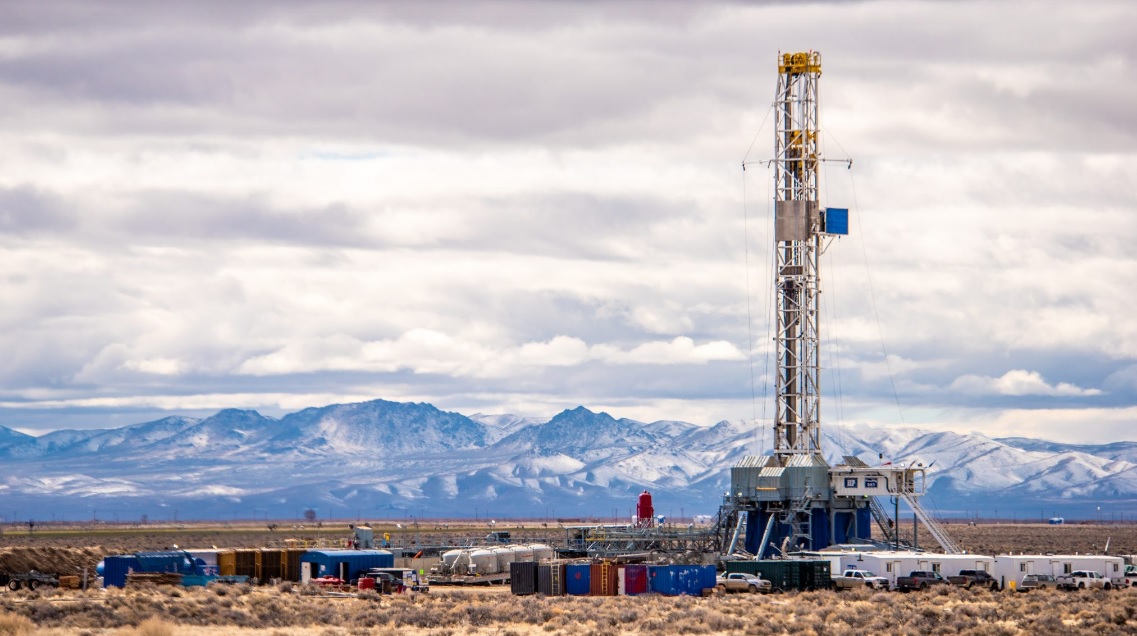Fervo Energy successfully completed a well test at its full-scale commercial pilot, the results of which, the company says, confirms the commercial viability of Fervo’s drilling technology.
The pilot project, Project Red, took place in northern Nevada over a period of 30 days. The test achieved a flowrate of 63 liters per second at high temperature that enables 3.5 MW of electric production, setting new records for both flow and power output from an enhanced geothermal system, said Fervo.
Fervo drills its geothermal wells using fracking technology employed by the oil and gas industry. The company reports that it is the first to successfully drill a horizontal well pair for commercial geothermal production, achieving lateral lengths of 3,250 feet, reaching a temperature of 191 C, and proving controlled flow through rigorous tracer testing.
“By applying drilling technology from the oil and gas industry, we have proven that we can produce 24/7 carbon-free energy resources in new geographies across the world,” said Tim Latimer, CEO and co-founder of Fervo Energy.
Fervo said the pilot was completed without creating any seismic activity, having implemented an induced seismicity mitigation protocol following best practices established by the U.S. Department of Energy (DOE). The company said its next horizontal well pair is expected to achieve more than double the power output of the pilot design.
In 2021, Google partnered with Fervo because, according to Michael Terrell, senior director for energy and climate at Google, they saw significant potential for Fervo’s geothermal technology to unlock a critical source of 24/7 carbon-free energy at scale. Google said it intends to power its cloud region datacenter in Las Vegas with the geothermal resource.
“Achieving our goal of operating on 24/7 carbon-free energy will require new sources of firm, clean power to complement variable renewables like wind and solar,” said Terrell.
Fervo’s results from Project Red support the findings of the DOE Enhanced Geothermal Earthshot and show that geothermal energy could supply over 20% of energy needs in the U.S. and complement wind and solar to reach a fully decarbonized grid.
The DOE’s Enhanced Geothermal Shot aims to dramatically reduce the cost of enhanced geothermal systems (EGS) by 90%, to $45 per megawatt hour by 2035. DOE estimates that investments in EGS can unlock affordable clean energy for over 65 million American homes and exponentially increase opportunities for geothermal heating and cooling solutions nationwide.
“Power systems modeling confirms that geothermal can be a critical player in a fully decarbonized grid,” said Jesse Jenkins, assistant professor and leader of the Zero-carbon Energy Systems Research and Optimization (ZERO) lab at Princeton University. “Fervo’s successful commercial pilot takes next-generation geothermal technology from the realm of models into the real world and starts us on a path to unlock geothermal’s full potential.”
Fervo recently broke ground on its first greenfield development in southwest Utah, adjacent to the DOE’s Frontier Observatory for Research in Geothermal Energy (FORGE). Revenue and learnings from Fervo’s Utah project will go toward the development of other projects in new geographies.
In conjunction with the announcement, Fervo is hosting research and industry partners for the inaugural Fervo Energy Technology Day on July 19 in Houston to present findings from the project and explain their implications for accelerating the deployment of next-generation geothermal power.
This content is protected by copyright and may not be reused. If you want to cooperate with us and would like to reuse some of our content, please contact: editors@pv-magazine.com.









By submitting this form you agree to pv magazine using your data for the purposes of publishing your comment.
Your personal data will only be disclosed or otherwise transmitted to third parties for the purposes of spam filtering or if this is necessary for technical maintenance of the website. Any other transfer to third parties will not take place unless this is justified on the basis of applicable data protection regulations or if pv magazine is legally obliged to do so.
You may revoke this consent at any time with effect for the future, in which case your personal data will be deleted immediately. Otherwise, your data will be deleted if pv magazine has processed your request or the purpose of data storage is fulfilled.
Further information on data privacy can be found in our Data Protection Policy.